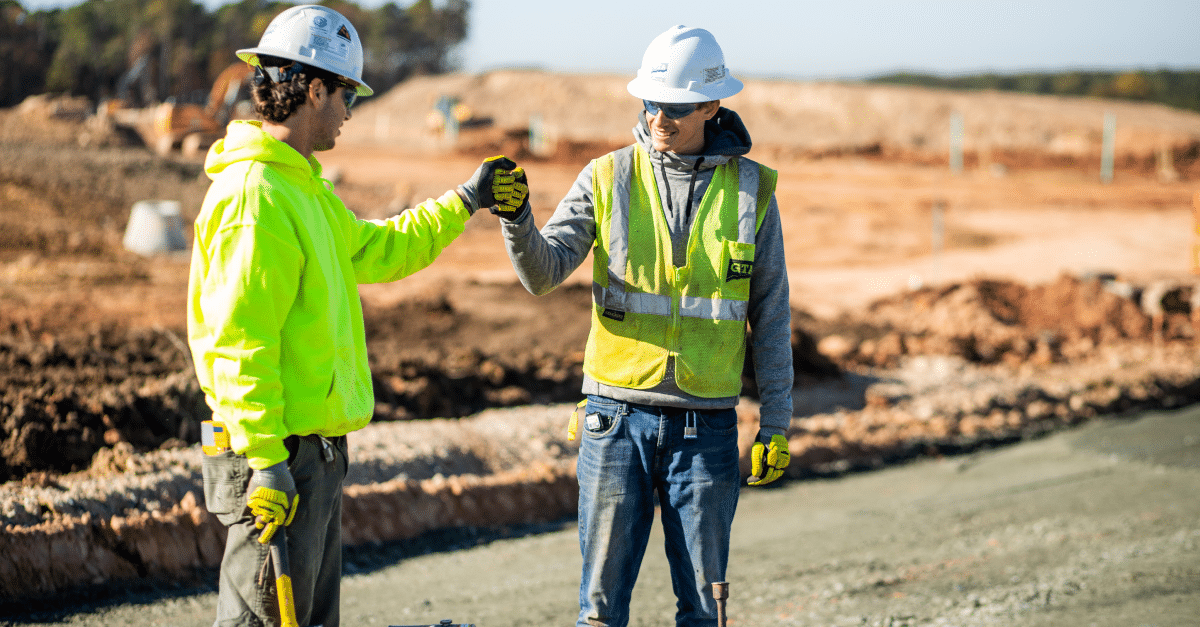About Geotechnical Engineering For Construction Projects
About Geotechnical Engineering For Construction Projects
Blog Article
A Biased View of Geotechnical Engineering For Construction Projects
Table of ContentsOur Geotechnical Engineering For Construction Projects PDFsSome Ideas on Geotechnical Engineering For Construction Projects You Should KnowThings about Geotechnical Engineering For Construction ProjectsThe Facts About Geotechnical Engineering For Construction Projects UncoveredNot known Details About Geotechnical Engineering For Construction Projects Not known Incorrect Statements About Geotechnical Engineering For Construction Projects
The duty of geotechnical engineering dramatically takes care of understanding the features of soil and rock, which may differ substantially by their thickness, moisture content etc. These functions need to be analyzed by geotechnical designers to forecast their movements under various scenarios. The security in addition to security of frameworks are influenced by soil problems, making this evaluation needed.A geotechnical designer will certainly check out dirt to identify the bearing capability of the earth and suggest proper structure types, such as shallow structures, deep foundations like heaps, or specialized options like drifting structures for soft dirts. Understanding the features and activities of soil and rock, along with just how they communicate with building and constructions that have been erected on or within them, is among the primary descriptions for why geotechnical design is crucial.
Ecological defense is completed via geotechnical engineering. Know-how in air, water, and soil top quality maintenance is put to utilize by geotechnical engineers to decrease the adverse impacts of projects.
To sum up, geotechnical design is a vital discipline that protects the strength and honesty of civil facilities. Geotechnical designers contribute to making structure tasks reliable all over the world by understanding the behaviour of earth products and using appropriate preparation approaches.
Geotechnical Engineering For Construction Projects for Beginners
By taking a look at dirt, rock, and subsurface problems, geotechnical designers give essential understandings that assist in the layout, building, and maintenance of structures and facilities.

Facts About Geotechnical Engineering For Construction Projects Revealed
Laboratory screening: Establishing the properties of dirt and rock. Several top-level building and construction tasks have successfully utilized geotechnical design to guarantee their stability and safety.

As a leader in geotechnical design, BECC Inc. is devoted to delivering innovative and reliable options that satisfy the highest possible criteria of high quality and safety. To find out more on just how BECC Inc. can support your next building and construction project, call us today and let us aid you develop on strong ground.
William Rankine, an engineer and physicist, created an alternate to Coulomb's earth pressure concept. Albert Atterberg developed the clay uniformity indices that are still utilized today for dirt classification. In 1885, Osborne Reynolds identified that shearing causes volumetric extension of dense products and tightening of loosened granular materials. Modern geotechnical engineering is go to my site stated to have actually started in 1925 with the magazine of Erdbaumechanik by Karl von Terzaghi, a mechanical engineer and geologist.
Geotechnical Engineering For Construction Projects Things To Know Before You Buy
Terzaghi likewise developed the framework for concepts of bearing capability of structures, and the concept for forecast of the price of negotiation of clay layers due to combination. After that, Maurice Biot totally created the three-dimensional dirt debt consolidation theory, expanding the one-dimensional version formerly established by Terzaghi to extra general hypotheses and introducing the set of basic equations of Poroelasticity.
Geotechnical designers examine and establish the residential properties of subsurface conditions and products.
Geotechnical Engineering For Construction Projects Fundamentals Explained
Geologic mapping and analysis of geomorphology are commonly completed in examination with a rock hound or design geologist. Subsurface exploration normally entails in-situ screening (for instance, the conventional infiltration examination and cone penetration test). The digging of examination pits and trenching (especially for finding mistakes and slide planes) may also be used to learn more about soil problems at deepness. , which utilizes a thick-walled split spoon sampler, is the most typical method to collect disturbed samples.

Typically, the user interface's precise geometry is unknown, and a simplified interface geometry is thought. Finite inclines need three-dimensional versions to be examined, so most slopes are examined assuming that they are definitely broad and can be represented by two-dimensional versions.
Geotechnical Engineering For Construction Projects for Dummies
Producing the style based on a functioning theory of habits expected under the most likely conditions. Choice of amounts to be observed as building earnings and determining their anticipated values more info here based on the working hypothesis under the most negative problems.
Dimension of amounts and examination of real problems. It is unsuitable for tasks whose style can not be changed during building and construction.
Report this page